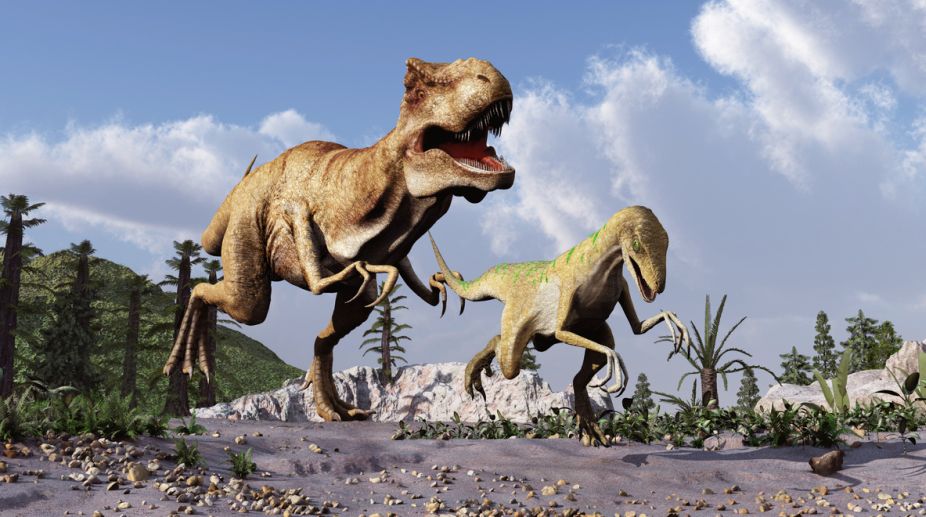T. rex dinosaur not as intelligent as monkeys, reveals study
Dinosaurs like T. rex, previously thought to be smart, were not as intelligent as monkeys, a study revealed on Monday.

Representational image (Photo: Getty Images)
The size and weight of the giant T rex dinosaur would have made the fearsome carnivore unable to run at very high speeds, according to a new study which proves that a classic chase scene from the Jurassic Park movie was scientifically inaccurate.
In Stephen Spielberg's original adaptation of the Jurassic Park, a rampant Tyrannosaurus rex (T rex) is shown chasing Jeff Goldblum's character, Ian Malcolm, as he sits injured in the back of a 4×4 vehicle.
Advertisement
Researchers from the University of Manchester in the UK said that the sheer size and weight of T rex means it could not move at high speed, as its leg-bones would have buckled under its own weight load.
Advertisement
The research, published in the journal PeerJ, looks extensively into the gait and biomechanics of the world's most famous dinosaur and, using the latest high performance computing technology from N8 High Performance Computing (HPC), has created a new simulation model to test its findings.
Researchers have combined two separate biomechanical techniques, known as multibody dynamic analysis (MBDA) and skeletal stress analysis (SSA), into one simulation model, creating a new more accurate one.
The results demonstrate any running gaits for T rex would probably lead to 'unacceptably high skeletal loads'. This means that any running would simply break the dinosaur's legs.
This contradicts the running speeds predicted by previous biomechanical models which can suggest anything up to 72 kilometres per hour.
“The running ability of T rex and other similarly giant dinosaurs has been intensely debated amongst palaeontologist for decades,” said William Sellers, who led the research.
“However, different studies using differing methodologies have produced a very wide range of top speed estimates and we say there is a need to develop techniques that can improve these predictions,” Sellers said.
“Here we present a new approach that combines two separate biomechanical techniques to demonstrate that true running gaits would probably lead to unacceptably high skeletal loads in T rex,” he said.
The results also mean that the T rex could not pursue its prey in a high-speed chase as previously thought.
“Being limited to walking speeds contradicts arguments of high-speed pursuit predation for the largest bipedal dinosaurs like T rex and demonstrates the power of Multiphysics approaches for locomotor reconstructions of extinct animals,” he added.
Although the research focuses on the T rex, the findings also means running at high speeds were probably highly unlikely for other large two-legged dinosaurs such as, Giganotosaurus, Mapusaurus, and Acrocanthosaurus.
“Tyrannosaurus rex is one of the largest bipedal animals to have ever evolved and walked the earth,” Sellers said.
“So it represents a useful model for understanding the biomechanics of other similar animals. Therefore, these finding may well translate to other long-limbed giants so but this idea should be tested alongside experimental validation work on other bipedal species,” he said.
Advertisement
Dinosaurs like T. rex, previously thought to be smart, were not as intelligent as monkeys, a study revealed on Monday.
Scientists from the Indian Institute of Technology (IIT)-Roorkee and Geological Survey of India (GSI) have discovered the oldest fossil remains of a long-necked, plant eating dicraeosaurid dinosaur in Jaisalmer, Rajasthan.
This latest discovery is further confirmation of the long-held theory that the dinosaurs didn’t exactly die out; they just evolved into birds. This gets even more interesting when you realise that the embryo in question is of a theropod dinosaur, an incredibly diverse group of dinosaurs that ranged from the tiny Microraptor to the Tyrannosaurus rex itself.
Advertisement
